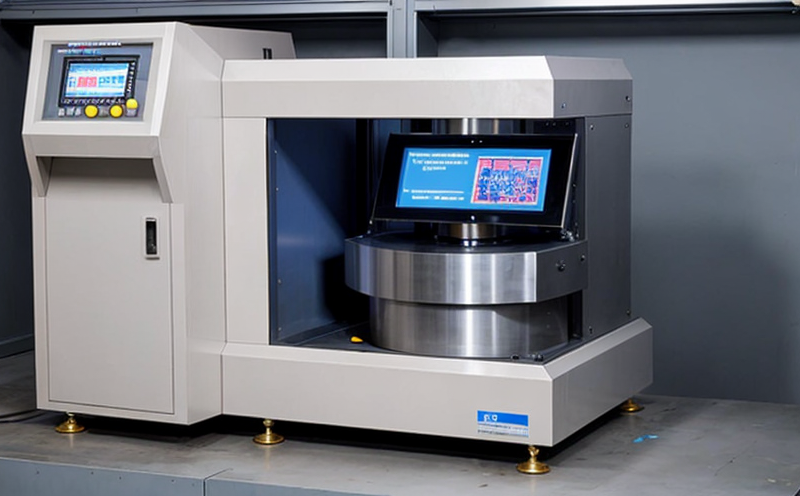ISO 16012 Coordinate Measurement for Dimensional Accuracy
The International Organization for Standardization (ISO) has developed ISO 16012 to provide a comprehensive framework for coordinate measurement of additive manufactured parts. This standard ensures that the dimensional accuracy of parts produced through Additive Manufacturing (AM) processes is accurately assessed, which is critical for industries like aerospace, automotive, and medical devices.
The process involves using high-precision coordinate measuring machines (CMMs) to scan and measure the geometry of AM parts. The measurements are then compared against the CAD model to determine how closely the part conforms to design specifications. This ensures that parts meet critical tolerances necessary for their intended applications.
ISO 16012 provides detailed guidance on setup, measurement procedures, data acquisition methods, and evaluation criteria. It also addresses challenges specific to AM processes, such as layer-by-layer fabrication which can introduce unique dimensional inaccuracies. Understanding these nuances is essential for achieving reliable quality control.
The standard emphasizes the importance of traceability in measurements, ensuring that all steps from raw material preparation through final inspection are documented accurately. This helps maintain consistency across production batches and facilitates compliance with regulatory requirements.
For industries relying heavily on precision components, adhering to ISO 16012 ensures consistent performance and reliability of products. By implementing this standard, manufacturers can demonstrate adherence to best practices in measurement science while also enhancing their reputation for quality.
The use of coordinate measuring machines (CMMs) plays a crucial role in the implementation of ISO 16012. These instruments are capable of capturing detailed surface information with micron-level precision. They allow operators to perform non-contact measurements without altering the part's integrity, making them ideal for inspecting complex geometries often found in AM parts.
One key challenge when measuring AM parts is ensuring that all layers contribute equally to overall accuracy. Layer thicknesses can vary slightly due to factors like powder density or temperature control during deposition. Therefore, careful calibration and verification of the CMM itself are necessary before beginning any measurements.
Another aspect worth noting is the need for appropriate software tools capable of handling large datasets generated by modern CMM systems. Data processing capabilities must be robust enough to manage high-resolution scans while still providing meaningful insights into potential deviations from nominal dimensions.
To ensure accurate results, it's important to follow established protocols outlined in ISO 16012 regarding specimen preparation. This includes cleaning the part thoroughly before scanning and ensuring that the scan orientation aligns with expected usage angles. Proper handling reduces the risk of introducing errors during measurement.
In conclusion, adhering to ISO 16012 ensures comprehensive dimensional accuracy testing for AM parts produced according to best practices recognized globally. It helps maintain high standards across various sectors where precision is paramount.
- Calibration: Ensuring CMMs are properly calibrated before use
- Data Processing: Utilizing software capable of managing extensive dataset generated by CMM systems
- Surface Preparation: Cleaning parts thoroughly and aligning scan orientation correctly.
Benefits
Adhering to ISO 16012 Coordinate Measurement for Dimensional Accuracy brings numerous benefits, particularly in terms of quality assurance and regulatory compliance. By leveraging this standard, manufacturers can enhance their production processes, leading to improved product reliability and customer satisfaction.
One significant advantage is the ability to detect subtle discrepancies early on in the manufacturing cycle. Early detection allows for corrective actions to be taken promptly, minimizing waste and rework costs associated with defective parts. This proactive approach not only improves efficiency but also enhances overall productivity by reducing downtime related to quality issues.
The standard also promotes consistency across different batches of products, ensuring uniformity in performance characteristics regardless of when they were produced. Such consistency is crucial for maintaining brand reputation and gaining trust among end-users who expect dependable quality from each purchase.
From a regulatory perspective, compliance with ISO 16012 ensures that companies meet stringent international standards set forth by governing bodies worldwide. This not only simplifies the process of obtaining necessary approvals but also opens up opportunities for broader market access and increased competitiveness within global markets.
In addition to these tangible advantages, adopting this standard fosters innovation within organizations by encouraging continuous improvement efforts aimed at refining measurement techniques further still. Companies committed to excellence in their field recognize that staying abreast of evolving standards is vital for long-term success.
Industry Applications
The application of ISO 16012 Coordinate Measurement for Dimensional Accuracy extends across multiple industries, each benefiting uniquely from the precision and reliability it offers. In the aerospace sector, where even minor deviations can lead to catastrophic failures, accurate dimensional measurements are indispensable.
Aerospace manufacturers rely heavily on AM technologies like Selective Laser Sintering (SLS) or Electron Beam Melting (EBM), which produce complex geometries that demand stringent quality controls. By following ISO 16012 guidelines, these companies ensure that every component meets exacting specifications critical for flight safety.
In automotive manufacturing, the automotive industry also leverages AM technologies to create lightweight yet strong structural elements such as engine blocks or exhaust systems. Ensuring precise dimensions is paramount here too since even small errors could compromise performance or durability of vehicles.
The medical device sector stands to gain significantly from adhering to ISO 16012 standards as well. Implants and prosthetics need to fit perfectly into human bodies without causing harm; any deviation can have serious implications for patient health outcomes. Using this standard guarantees that all devices manufactured using AM techniques adhere strictly to anatomical requirements.
Other notable sectors benefiting from this standard include consumer electronics, where intricate circuit boards require tight tolerances; jewelry manufacturing, which demands exact replication of designs; and architectural models, which need faithful representation of intended structures. Across these diverse fields, the ability to achieve precise measurements consistently translates into better products and enhanced customer experiences.





